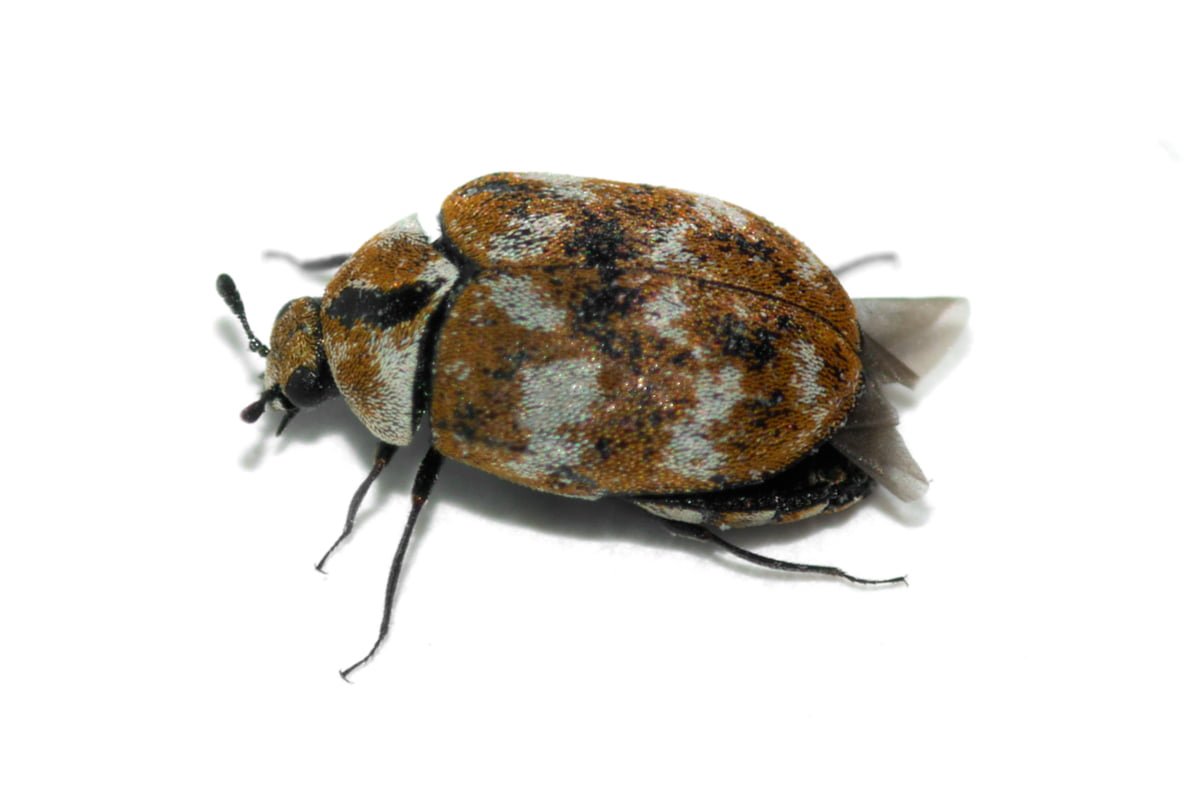Carpet Beetles
Appearance
Adult carpet beetles are easily recognized by their oval black body (2.8 to 5 mm long), and sometimes with a pattern of yellow and white scales on the head and wings. The larvae are pale to dark and can have a soft down on their sides, depending on the species.
Think you might have found this insect in your home?
Talk with an Expert
Life Cycle
The female carpet beetle lays 90 eggs, often in accumulations of dust hidden in dark and closed places or a food source. The gestation period of the larvae is from 177 to 370 days depending on the species, which is much longer than the adult’s lifespan that ranges between 13 and 60 days, also depending on the species and sex.
Habitat and Food
The carpet beetle is a common insect whose larvae feed mainly on animal products such as feathers, cotton, wool, hair, hair and textiles (they also feed on dead insects). Although adult beetles prefer the outdoors, larvae prefer the warmth indoors. Their favorite hiding places are in baseboards, drawers, closets, cupboards and under carpets, as well as other dark and quiet areas.
Undesirable Effects
The carpet beetle larvae are the main cause of damaging effects because they burrow small holes or cause an irregular appearance to carpets and clothing.
Signs of Infestation
The presence of regular or irregular holes in textile would be the key indicator of a carpet beetle infestation. In addition, larvae infestation can be detected either by old molts (cast skins) or by their droppings the size of a grain of salt that they leave behind.
Preparation Steps for a Treatment
- Vacuum all carpets, rugs and upholstery surfaces. Discard the vacuum bag immediately.
- Clean all wool or natural fiber-type clothing.
- For the application of a liquid treatment, make all treatment surfaces accessible (move furniture away from the edge of the walls, empty all shelves, etc.)
- Plan to leave your home for the duration of the treatment and return only after 4 hours. Wherever possible, open your windows for 20 minutes upon your return. It is also important to not walk barefoot on treated areas for 48 hours after treatment.